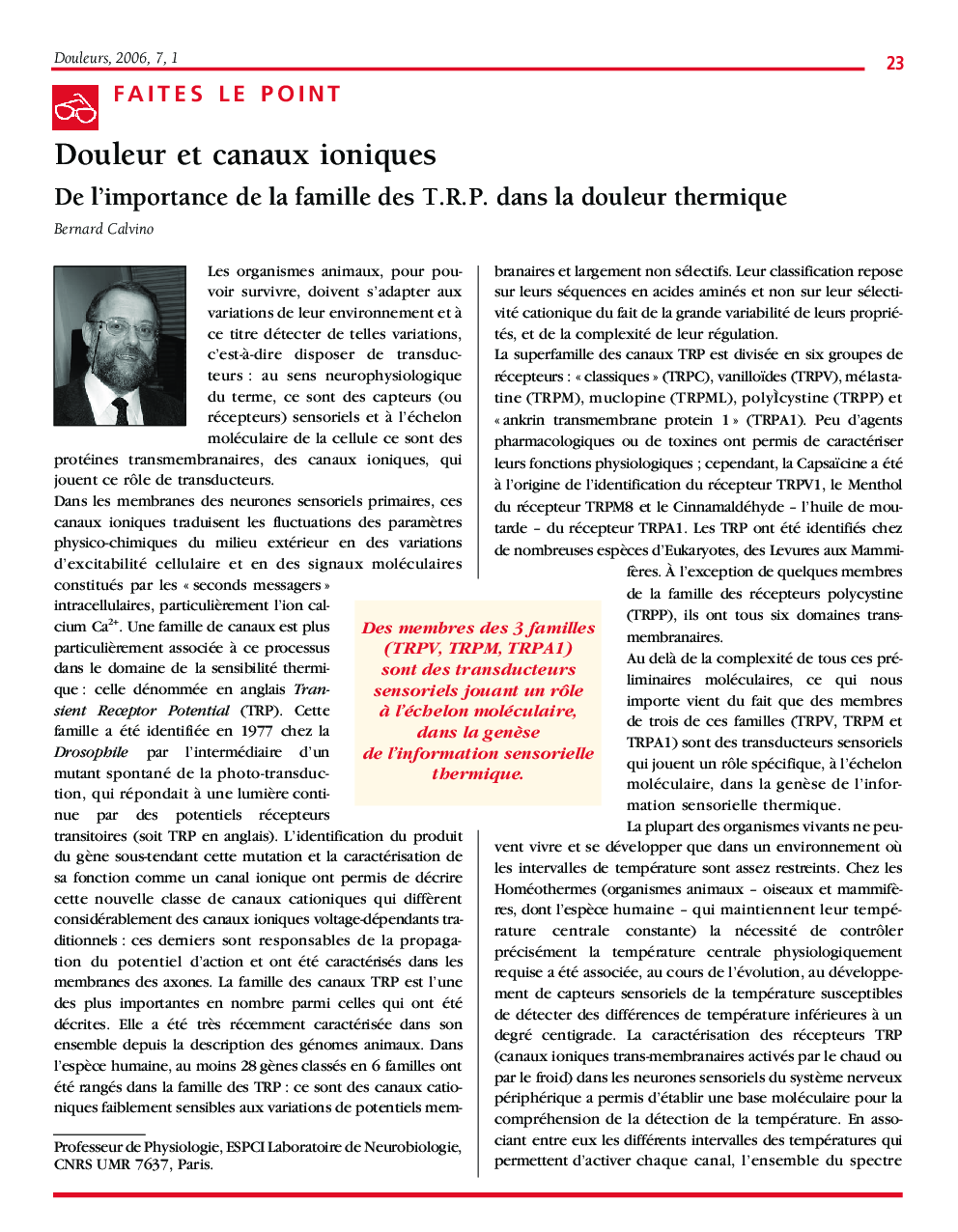| Article ID | Journal | Published Year | Pages | File Type |
|---|---|---|---|---|
| 906058 | Douleurs : Evaluation - Diagnostic - Traitement | 2006 | 5 Pages |
Abstract
Recent progress in molecular biology has led to the rapid discovery of the molecular basis of non-nociceptive and nociceptive thermal sensitivity: the transient receptor potential (TRP) family. From the discovery of the heat-sensitive nociceptive capsaicine receptor (vanilloid receptor VR1, renamed TRPV1 since it belongs to the TRP family) to the more recent identification of the TRPA1 cold nociception receptor, the description of several proteins sensitive to temperature and characterized as cation channels generators of receptor potentials has enabled a better understanding of the role played by a small subset of receptors of the large TRP family in the molecular mechanisms involved in the genesis of thermal sensorial nervous information. Sensorial neurophysiology has thus passed from the domain of description (electrophysiological response of thermoreceptors and thermonocicpetors to thermal stimulation) to the realm of explanations (molecular mechanisms leading to the genesis of receptor potentials). These new data raise the possibility of developing powerful specific pharmacological agents for the treatment of pain: the story started with capsaicine and its assumed receptor.
Related Topics
Life Sciences
Neuroscience
Neurology
Authors
Bernard Calvino,
